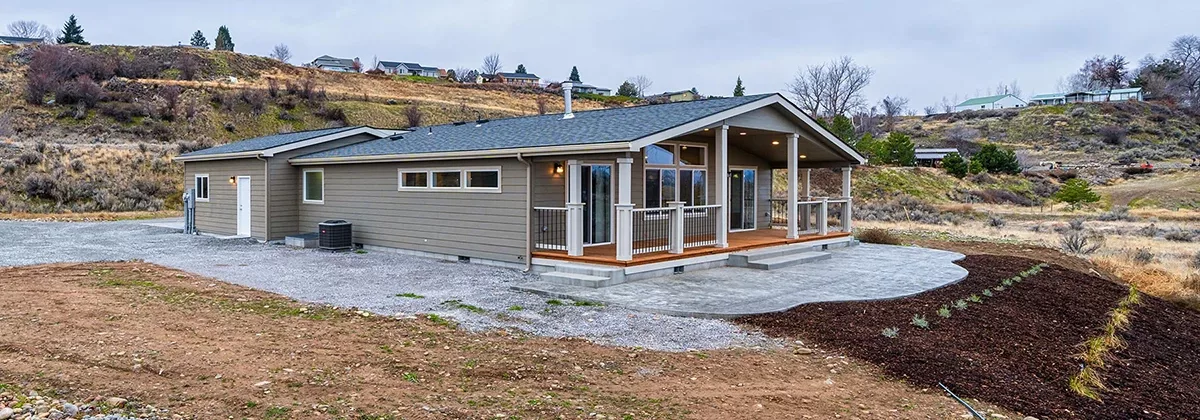A Complete Guide to How a Manufactured Home is Installed
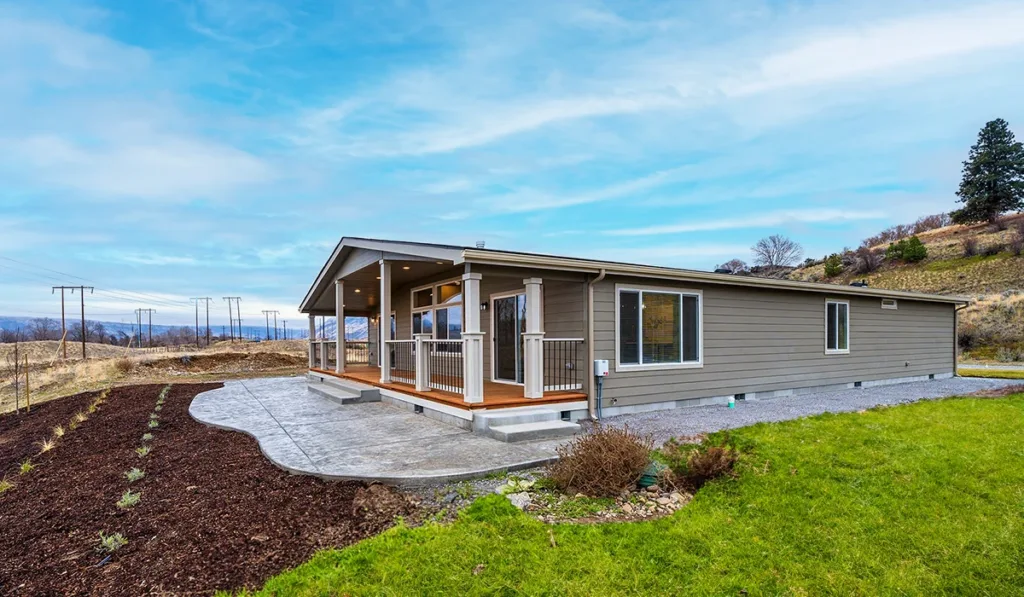
Manufactured homes, or prefabricated homes, have skyrocketed in popularity due to their affordability, energy efficiency, and customizable designs. If you’re considering buying a manufactured home of your own, understanding the installation and set-up process is important. From preparing the site, delivery, and the finishing touches, this guide walks you through how a manufactured home is installed on your land.
How Long Does Manufactured Home Installation Take?

The entire process from purchasing a manufactured home to occupancy typically takes about 6 months. However, setting up a prefabricated home is a complex process with many moving parts, so the timeline can vary from project to project.
Manufactured Home Installation Timeline:
- Site preparation: This process can take anywhere from a few weeks to several months, depending on how much work has already been done to the land, as well as permitting acquisition.
- Delivery: Once the site is ready, the home must be transported from the factory to your property, which can take a week or longer depending on the delivery radius.
- Setting the home: The process of setting the home on the foundation and securely anchoring it in place typically takes about a day.
- Finishing work: Once anchored to the foundation, the finishing work can take 3-4 weeks. This timeframe may be extended based on the complexity of the project and if any additional structures need to be built like a porch or driveway.
Each step of the home installation process will be carried out in accordance with HUD safety and quality standards.
How a Manufactured Home is Installed (Step-by-Step)
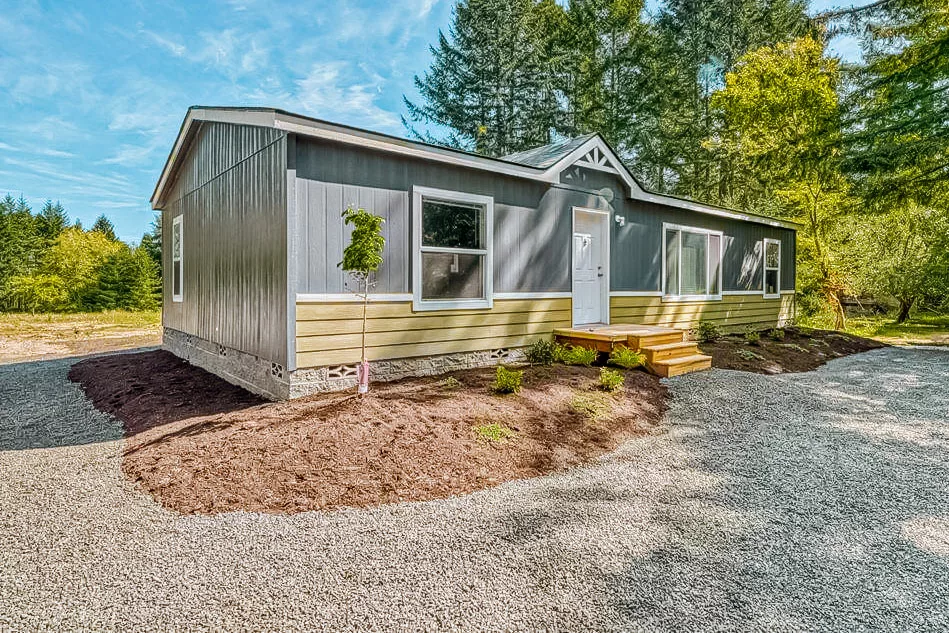
Installing a manufactured home is a multi-step process that involves careful planning and coordination. This is why one of the most important decisions you’ll make in the manufactured home installation process is selecting the right licensed contractor.
Below is a detailed overview of each stage of the manufactured home installation process, starting with finding the best contractor for the job.
Selecting a Manufactured Home Contractor
After purchasing your manufactured home, the first step of the set-up process is partnering with a licensed contractor like Len’s Home Center, that specializes in home installations. We will manage every step of the process for you, from site preparation and utility connections to the delivery and final set-up of your home.
We will also manage the construction of additional structures like decks or carports, ensuring everything complies with all local building codes, and your home is fully ready for move-in.
Site Preparation
Before delivery, proper site preparation is essential to ensure your home is installed on a safe and compliant foundation. Below is an overview of the manufactured home site preparation process:
- Site selection and inspections: Your contractor will help you select suitable land for your home. Site inspections will be conducted to ensure compliance with local building codes.
- Zoning and permits: Before any physical preparation can begin, all necessary zoning approvals and permits must be obtained.
- Clearing, grading, and leveling the site: The site will be cleared of obstructing debris, structures, or vegetation. It will also be graded and leveled to create an even surface for the foundation.
- Constructing a foundation: Your contractor will construct a foundation for the home to be installed upon.
- Setting up utility connections: Your contractor will work with utility companies to arrange water, sewer, and electricity for your home.
Once your land is fully prepared to support your home, you can arrange for its delivery.
Manufactured Home Delivery
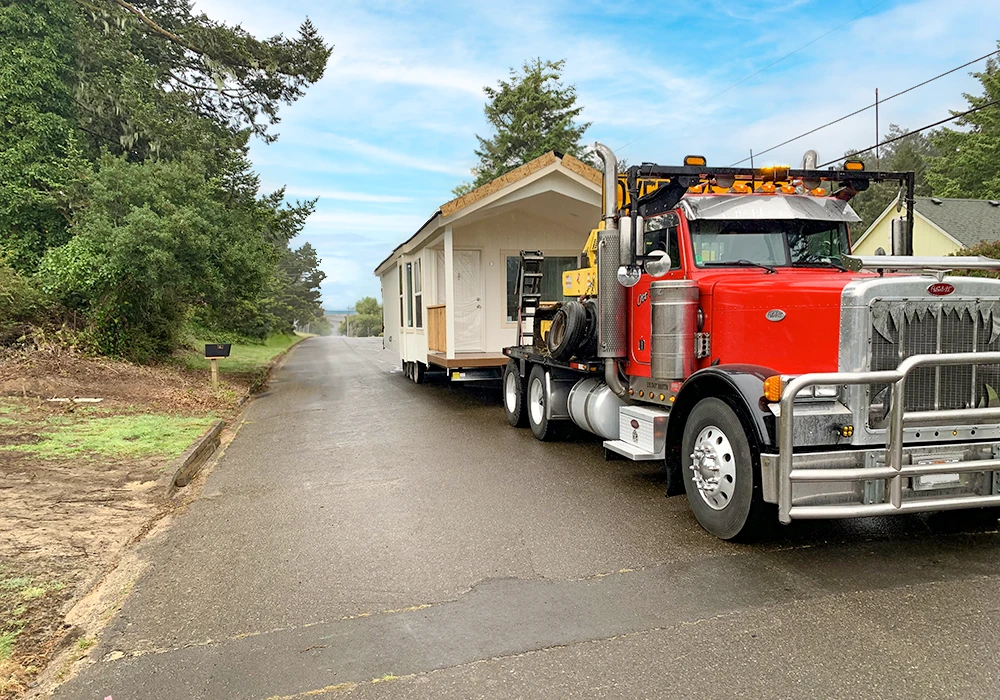
When the site is ready, it’s time to start planning for delivery day. Your contractor and transportation team will map out the safest and most efficient route, taking into account road conditions, size restrictions, and weather.
Homes are typically transported in sections (single, double, or triple-wide) via a heavy-duty truck called a toter, which are specifically designed to carry manufactured houses. Before the day of delivery, your team will ensure the route from the road to the installation site is clear of obstacles like low-hanging trees or narrow pathways.
Placing the Home on the Foundation
After the home is delivered, your set-up team will begin positioning it on the foundation. The home must be precisely aligned and leveled to ensure structural stability and avoid issues like uneven floors or misaligned walls.
Positioning and placing the home typically involves using cranes, hydraulic jacks, and other leveling tools to place the home accurately on the foundation.
Joining the Sections (For Multi-Section Floorplans)
For multi-section floorplans (e.g., double or triple-wide), these separate sections will need to be connected. The installation team will pay close attention to ensure the sections fit seamlessly, with no gaps between the walls, roof, or floors.
Once all the sections are aligned, the crew will secure them together using special fasteners and brackets. The seams between the sections will be carefully sealed to create a unified structure, protecting against the elements.
Anchoring the Home to the Foundation
Once everything is correctly positioned, the house must be secured to the foundation through a process called anchoring. The frame is carefully fastened to the foundation using tie-downs or other specialized anchoring systems. Properly anchoring your manufactured home to the foundation is essential for long-term safety and durability.
Anchoring also plays a key role in protecting your home’s warranty and ensuring compliance with HUD regulations.
Connecting Your Utilities
The next step is to connect the home to all necessary utilities like electricity, water, gas, and sewer. Your contractor will conduct thorough tests to verify that the connections operate correctly, and local inspectors will also need to sign off on them.
Interior Finishing Touches
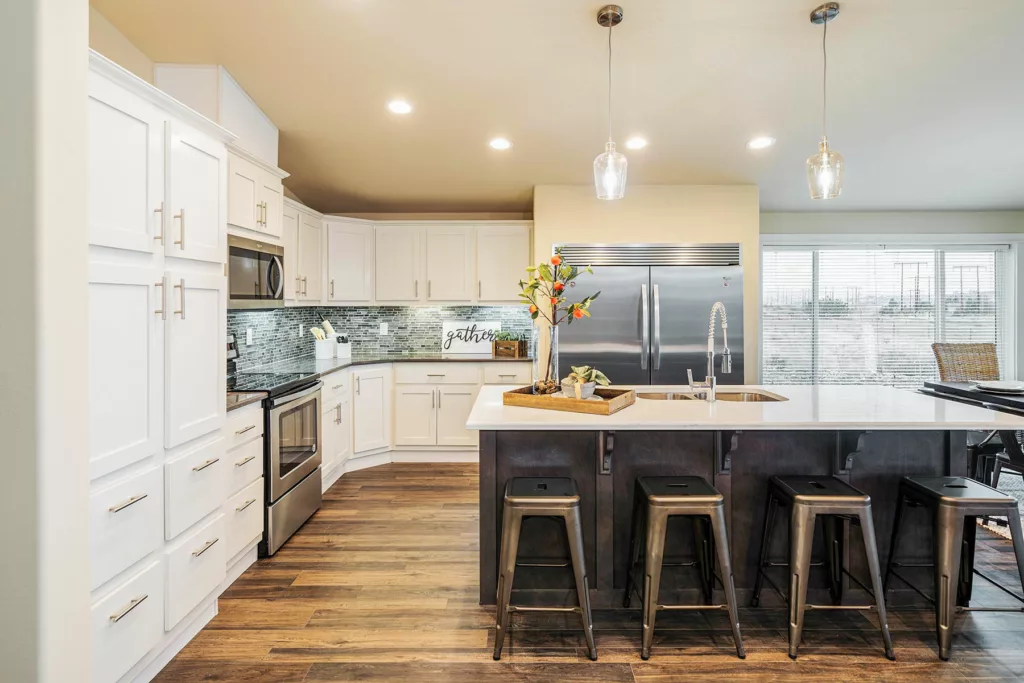
Once the structure is in place, the interior finishing touches begin. Depending on the layout and design of your manufactured home, this stage may include:
- Flooring, Walls, and Ceilings: Any adjustments needed to align the floors, walls, and ceilings are finalized. Depending on your customization choices, the installation team will install the baseboards, moldings, and any other decorative elements.
- Appliances: Appliances are installed before delivery, but after delivery, they are plugged in and tested for functionality.
- Final Details: Minor details such as painting touch-ups, cleaning, and checking the functionality of doors and windows will be completed.
- Cabinetry and doors: All interior doors and cabinet doors are leveled and adjusted.
Exterior Finishing Touches

The exterior finishing touches are just as important as the interior, as they impact both the curb appeal and the overall durability of your home. During this step, required features such as driveways and steps with handrails will be installed, as well as any optional features you choose.
Common exterior additions include:
- Skirting Installation: Skirting, also known as underpinning, is installed around the base of the home to cover the foundation and provide a clean, finished look. Skirting protects the underside of your home from pests, weather, and debris, while also helping to regulate temperature and airflow beneath the home.
- Stairs, Porches, and Decks: Steps with handrails are required for all homes, but larger decks are optional and can significantly enhance the functionality of your outdoor space.
- Walkways and Driveways: Driveways are required for all homes as well, and they can be gravel if approved in your jurisdiction. While not always included in the installation process, some homeowners also choose to install walkways or fencing.
Some installation services are not included in the standard setup and delivery of a manufactured home and may incur additional expenses. Make sure to discuss this with your contractor beforehand and factor it into your overall budget.
Safety Inspection
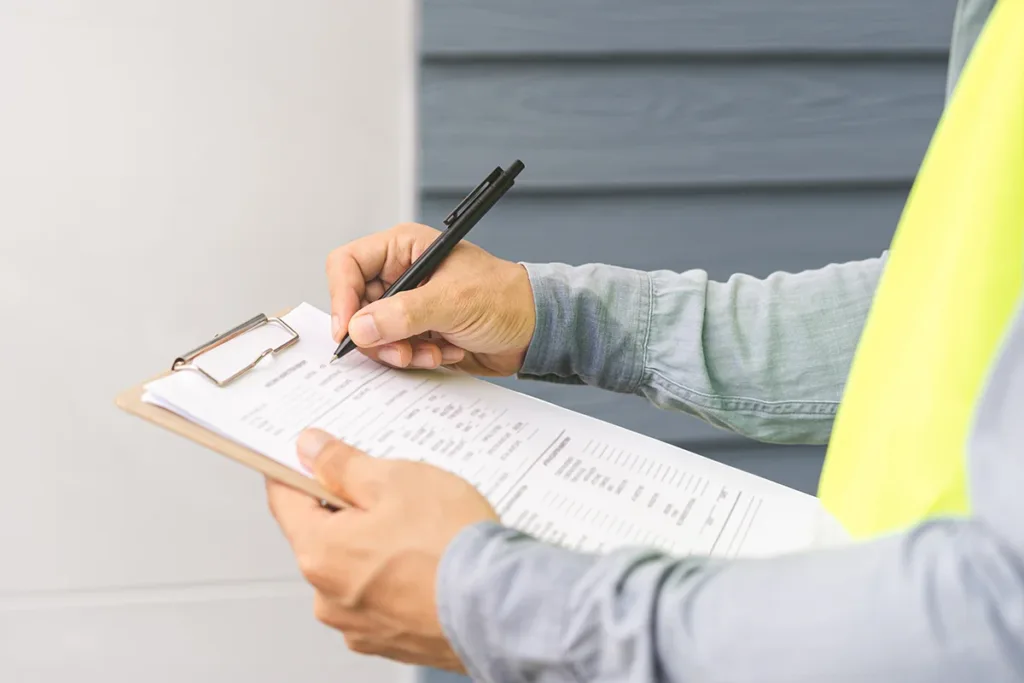
Before you can officially move into your new home, a comprehensive inspection must be completed first. This ensures that everything has been installed properly, all systems are functioning as they should, and your home complies with local safety regulations.
The inspector will typically evaluate:
- Foundation and Anchoring
- Utility Connections
- Structural Integrity
- Checking smoke detectors, carbon monoxide detectors, etc.
Once the home passes all necessary checks, the inspector will issue a certificate of occupancy, which means your home is legally approved for living!
Final Walkthrough
The final walkthrough with your contractor marks the completion of your manufactured home installation process. This is your chance to ensure every detail meets your expectations and address any issues before taking full possession of the home. If there are factory warranty issues or necessary repairs, your contractor will coordinate with the factory to have them perform the repairs.
As soon as the final inspection is complete and you are fully content with the results, you will receive the keys, and your new home is officially ready for move in!
Manufactured Homes and Installation Services
From finding your dream home to delivery and installation, at Len’s Home Center, we are here to support you every step of the way. Our contractors are fully licensed and insured, and highly experienced with local regulations, and HUD quality and safety standards. Follow the links below to browse our full selection of manufactured homes for sale in Oregon or learn more about our home installation services today.
Contact us online today or give us a call at (541)-269-9326 and we’ll help you find the manufactured home you’ve been dreaming of.
